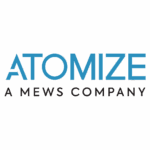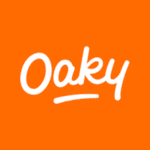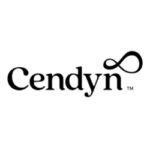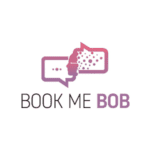 Tyler Morse, chairman and CEO of MCR Development recently advised attendees at the Asian American Hotel Owners Association annual trade show and conference to “Increase your rates; do it with confidence. … Stop wasting money … Buy smart technology.”
Tyler Morse, chairman and CEO of MCR Development recently advised attendees at the Asian American Hotel Owners Association annual trade show and conference to “Increase your rates; do it with confidence. … Stop wasting money … Buy smart technology.”
“This is a very simple business … don’t get swooned by all the complexities of the business… Room rates are where all of the profits are.” he said.
This is true for most hotels as their room revenue is the primary revenue stream. At Atomize we could not agree more with this sentiment. We entered the revenue management space with a clear vision to simplify pricing through artificial intelligence (AI) and automation, even for the most complex hotel operations with a greater share of non room revenues. The task of price setting is normally the responsibility of skilled revenue managers, some of the most highly paid resources in a hotel operation. Yet for most revenue managers the process of revenue management has evolved far beyond the original objective of setting the right price, for the right guest and the right time creating an overwhelming and complex workload that is affecting their ability to perform optimally and causing tremendous anxiety.
Quietly, but urgently, revenue managers are increasingly asking themselves “Which of my duties are mandatory, which are optional”; “Which are essential, which are discretionary?”; “Which are tactical, which are strategic?”. In this context, it is prudent to remember the words of General George S. Patton, “Good tactics can save even the worst strategy. Bad tactics will destroy even the best strategy.”
Relieving revenue managers from the burden of mundane and repetitive tasks, including tactical pricing, will go a long way to save time, increase revenues, and improve profits. An effective way to prevent bad pricing tactics is through intelligent automation.
What is Intelligent Automation (IA)?
Intelligent Automation (IA) is a concept leveraging a new generation of software-based automation. It links the concepts of doing (i.e. manual tasks such as data entry) and thinking (i.e. cognitive tasks such as recognising buying patterns) to execute business processes automatically on behalf of so-called knowledge workers commonly found in service industries who ‘think for a living’. This automation is achieved by mimicking the capabilities that knowledge workers use in performing their work activities.
The aim of IA is to automate processes with no or minimal human intervention and as a result increase process speeds, reduce costs, enhance compliance and optimise decision making.
For example, in the case of a banking system that is evaluating transactions for fraud, data is pulled from accounts to be fed into an AI algorithm. The AI engine evaluates whether the transactions match the pattern with which the customer typically spends their money, and whether that customer is breaking any laws by funding illegal activities. However, simply identifying these activities is not enough. If a transaction is found to be fraudulent or, at least, deserving of additional inspection, the AI engine would need to be able to act by stopping the transaction and trigger a set of complex actions, such as alerting the government, freezing the transaction, communicating with internal examiners, and sending a notice to the customer.
Ultimately IA frees knowledge workers to use their human capabilities to think, create and innovate to deliver strategic outcomes. Employee engagement is critical to every organisation’s success and when employees spend more time on higher-level work they are typically less stressed, happier, and more productive
In May 2019, Deloitte surveyed 523 executives from a range of industries about their intelligent automation strategies and the impact on their workforces. Over 90% of these organisations were expecting IA to increase their workforce capacity. On average, they were expecting a 26% increase in back-office capacity by 2022 and a 17% increase in capacity in their core business operations.
Scepticism within hospitality
It seems natural to assume that hotel companies are following this trend but why then do fewer than thirty percent of hotels use a revenue management system, and of these only a fraction leverage the capabilities of true intelligent pricing automation. Counterintuitively the popular belief seems to be that every activity completed by a revenue manager is already as streamlined as it could be.
The disconnect seems to lie in the fact that hotel operators do not typically differentiate between tactical pricing and strategic business planning or, at least, are sceptical that the former can be performed without much human intervention. In fact, we can illustrate by way of a simple example why pricing decisions should be automated when the appropriate data can be sourced (doing) to model demand and price sensitivity (thinking) with sophisticated AI software.
Take a hotel with 5 room types. How many daily pricing assessments do you think are required to price these 5 rooms for the next 365 days just for their base rate?
You may be thinking 5 x 365 x 1 or 2 (i.e. I’ll adjust prices once or twice per day). But we are not talking about price adjustments but rather price assessments. That’s the key difference and the fact that is often missed. As the world happens in real time the optimal approach would be to assess prices every second of every day to detect and respond to subtle changes in the market.
The calculation is therefore 5 x 365 x 86,400 (that’s seconds in a day). This results in a staggering 157 million price assessments each day.
But it doesn’t stop there. Every assessment must consider other factors such as rooms left to sell, booking pace, searches (so called regrets & denials), cancellation pace, competitor prices, the effect on other room types, the effect on other dates etc.
It’s simply impossible to do manually. And yet this is exactly what many revenue managers are attempting to do every day.
The age of Lean Revenue Management
Pricing automation does not eliminate the need for revenue managers to perform analysis on the business, create financial forecasts, examine competitor properties, understand guest characteristics etc. On the contrary, understanding the strategic business drivers and getting access to deep analytical insights into the revenue and profit of their business is essential to grow a sustainable operation but the ability to explore business performance from any angle is not required for tactical pricing decisions.
Atomize has conspicuously narrowed its focus and concentrated on supplying expert-grade rate optimization, while relying on an ecosystem of interconnected solutions for companion capabilities in adjacent areas (such as business intelligence) to unburden teams, make day-to-day operations more efficient and facilitate the convergence of sales, marketing and revenue management into a single commercial function.
In the current climate of staff shortages and high labour costs it is legitimate to be concerned about the complexity of user procedures associated with a traditional revenue management approach that requires a significant investment of time to first learn and then apply on a daily basis. However, full pricing automation is delivering demonstrable returns for large and small hotels who operate leaner, cross functional teams. Instead of investing large amounts of time trying to understand the intricate connections between demand, price and willingness to pay, revenue managers can now confidently leave tactical pricing to automated AI systems and focus instead on higher valued, more rewarding activities.
Written by Michael McCartan of Atomize





















